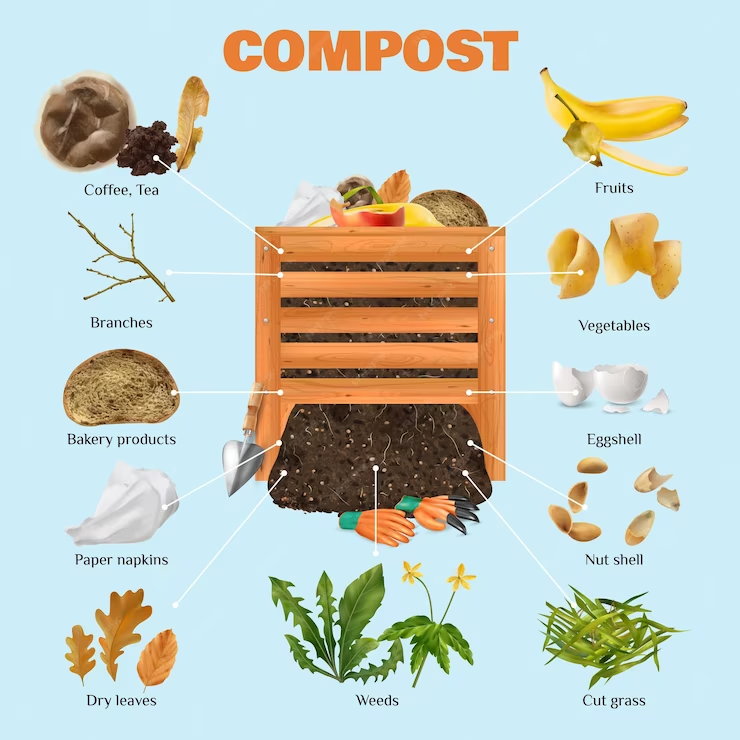High Phosphorus Fertilizer: Pros and Cons
Deprecated: The PSR-0 `Requests_...` class names in the Requests library are deprecated. Switch to the PSR-4 `WpOrg\Requests\...` class names at your earliest convenience. in /home/littlegr/public_html/wp-includes/class-requests.php on line 24
Hey plant lovers! Today, let’s embark on a journey into the fascinating realm of plant care, with our spotlight shining on the magic ingredient – High Phosphorus Fertilizer. I’m here to spill the dirt on what high phosphorus fertilizer is all about, its perks and pitfalls, and make sure you don’t fall for high phosphorus fertilizer myths!
What is High Phosphorus Fertilizer?
So, what’s the buzz about high phosphorus fertilizer? It is a specialized type of plant nutrient blend that contains an elevated concentration of phosphorus. Phosphorus is one of the essential macronutrients that plants require for various physiological processes, including energy transfer, root development, and flowering. In the context of fertilizers, phosphorus plays a crucial role in promoting robust root growth, enhancing flowering and fruiting, and supporting overall plant vitality. High phosphorus fertilizers are particularly beneficial during specific stages of a plant’s life cycle, such as the flowering and fruiting phases, where increased phosphorus levels contribute to the production of energy-rich compounds like adenosine triphosphate (ATP).
Pros and Cons: Navigating the High Phosphorus Terrain
Too high of something good can have a disadvantage, high phosphorus fertilizers are no exception. On the bright side, they turbocharge blooming and fruiting. However, an overdose might throw your plant party into chaos, leading to nutrient imbalances and potential harm. Strike the balance, and you’ve got yourself a green paradise.
Pros of High Phosphorus Fertilizer:
1. Promotes Flowering and Fruiting:
High phosphorus fertilizers are renowned for their ability to stimulate flowering and enhance fruiting. The increased phosphorus levels support the energy-intensive processes associated with the development of flowers and fruits.
2. Boosts Root Development:
Phosphorus is essential for robust root growth. High phosphorus fertilizers contribute to the formation of a strong and extensive root system, improving nutrient absorption and overall plant stability.
3. Enhances Energy Transfer:
Phosphorus is a key component of adenosine triphosphate (ATP), a molecule that stores and transfers energy within plant cells. Increased phosphorus levels help optimize energy transfer, supporting various metabolic processes.
4. Improves Overall Plant Vitality:
Plants treated with high phosphorus fertilizers often exhibit increased vigor and resilience. The enhanced root development and energy transfer contribute to improved plant health and vitality.
5. Suitable for Blooming Plants:
Plants that prioritize flowering, such as ornamental flowers and certain fruit-bearing plants, benefit significantly from high phosphorus fertilizers during their blooming phase.
Cons of High Phosphorus Fertilizer:
1. Risk of Over-Fertilization:
Using high phosphorus fertilizers in excess can lead to over-fertilization, causing imbalances in nutrient levels. This imbalance may negatively affect other essential nutrients, leading to potential harm to the plants.
2. Environmental Concerns:
Runoff from areas treated with high phosphorus fertilizers can contribute to water pollution, particularly in bodies of water. This runoff may promote algal blooms, negatively impacting aquatic ecosystems.
3. Not Suitable for All Plants:
Some plants, especially those in their early growth stages or with specific nutrient requirements, may not benefit from high phosphorus fertilizers. It’s crucial to tailor fertilizer choices to individual plant needs.
4. Cost Considerations:
High phosphorus fertilizers, especially those with specialized formulations, can be more expensive than general-purpose fertilizers. This may influence budget-conscious gardeners’ choices.
5. Potential Soil Acidification:
Continuous use of high phosphorus fertilizers may contribute to soil acidification over time. This can affect soil pH levels and impact the availability of other essential nutrients to plants.
Note: It’s essential to strike a balance and use high phosphorus fertilizers judiciously, considering the specific needs of the plants, the soil composition, and the growth stage. Regular monitoring and adjustments are key to reaping the benefits without causing harm to your green companions.
Choosing the Right Blend of Fertilizer
Selecting the right high phosphorus fertilizer is akin to choosing a menu for your plants.
1. Know Your Plant’s Phosphorus Needs:
Just like us, plants have different preferences. Some thrive with a bit more phosphorus, while others might be more modest in their requirements. Research your specific plants to understand their ideal phosphorus levels.
2. Consider the Growth Stage:
Plants have growth phases, and their nutrient needs change accordingly. During the flowering and fruiting stages, plants crave more phosphorus. Opt for a blend that aligns with your plant’s current growth cycle.
3. Soil Testing:
Before diving into the world of phosphorus fertilizers, get the lowdown on your soil’s current nutrient status. A simple soil test can reveal existing phosphorus levels, helping you make informed decisions about supplementation.
4. Understand Phosphorus Ratios:
Phosphorus fertilizers often come with three key numbers on the label, such as 10-20-10. These represent the ratio of nitrogen (N), phosphorus (P), and potassium (K). For flowering plants, a higher middle number (phosphorus) is the aim.
5. Choose the Right Form:
Phosphorus fertilizers come in various forms – granular, liquid, or soluble. Consider your watering habits, soil type, and the convenience of application when choosing the right form for your gardening style.
6. Balanced Nutrition Matters:
While phosphorus is vital, it’s not the sole player in the game. Look for fertilizers that provide a balanced mix of essential nutrients. Your plants need a holistic approach to nutrition for optimal health.
7. Organic vs. Synthetic Options:
Decide whether you prefer organic or synthetic fertilizers. Natural sources of phosphorus, like bone meal or guano, offer an organic touch. Synthetic options provide precise nutrient control. It’s all about finding your gardening philosophy.
8. Read and Follow Instructions:
The tiny print on the fertilizer bag holds valuable information. Pay attention to application rates, frequency, and any specific instructions provided by the manufacturer. Overdoing it is as harmful as underdoing it.
9. Trial and Observation:
Think of crafting the perfect fertilizer blend as an experiment. Start with recommended ratios, observe how your plants respond, and adjust accordingly. Your plants will give you cues about their preferences.
10. Seek Advice from Fellow Plant Parents:
Lastly, depend on your gardening community or friends with similar plants interest! Don’t hesitate to tap into the collective wisdom. Share your experiences, seek advice, and learn from the successes and challenges of others.
Natural Sources of High Phosphorus Fertilizer
For those who are more eco-conscious, nature has your back. You can easily DIY using bone meal, guano, and fish emulsion which are gifts from Mother Nature herself. These natural sources pack a phosphorus punch without the synthetic additives, catering to both your plant’s and your green conscience’s needs. Here are two methods to make your own phosphorus fertilizers for your plants.
- Banana Peel: Collect banana peels from your kitchen waste and chop them into smaller pieces. Place the peels in a jar and cover them with water. Let the mixture sit for one week and stir it occasionally. After one week, strain the liquid and dilute it with more water. Use this potassium and phosphorus rich natural fertilizer for your flowering plants.
- Eggshells: Collect eggshells from your kitchen waste, rinse them and let them dry. Then crush the eggshells into smaller pieces and place them in a jar and cover with water. Let the mixture steep for a few days for the calcium and phosphorus to leach into the water. Strain the liquid and use directly on your plants. Eggshells are not the only ingredient – you can substitute it with shells from oysters, mussels, clams and even fish bones!
- Plain vinegar: For every 1/4 part of eggshells, add 5 parts of vinegar. For example, 1 cup of egg shells to 5 cups of vinegar. Then, we will wait 20-30 days for this mixture to ferment. This mixture is also known as calphos. Dilute 2 tablespoons of calphos with 1 liter of water, and use this to water the plants once every week.
Parting words
In terms of plant care, high phosphorus fertilizers do have some benefits in ensuring vibrant flowering and fruiting. Nonetheless, how much fertilizer to add is still a learning process, one that should improve over time and several trials. As your advisor and fellow enthusiast, I urge you to play the notes wisely. Strike a balance, listen to your plants’ cues, and witness the harmonious bloom.
FAQs
- Q: Can I use high phosphorus fertilizer for all types of plants?
- A: While many plants benefit, it’s crucial to tailor your fertilizer choice to your specific plant’s needs.
- Q: Is there such a thing as too much phosphorus?
- A: Absolutely. Overdosing on phosphorus can lead to nutrient imbalances, impacting your plant’s health.
- Q: Can I mix high phosphorus fertilizer with other nutrients?
- A: Indeed, you can. Just ensure you follow recommended ratios to avoid overdoing it.
- Q: When is the best time to apply high phosphorus fertilizer?
- A: During the growing season is ideal, giving your plants the boost they need for optimal development.
- Q: Are natural sources of phosphorus better than synthetic ones?
- A: It depends on your preference. Natural sources offer an organic touch, but synthetic options provide precise nutrient control.





